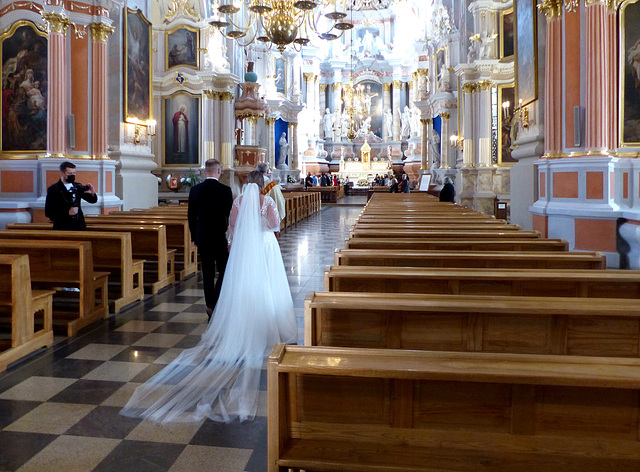Kaunas - Šv. Gertrūdos bažnyčia
Kaunas - Pilis
Kaunas - Laisvės alėja
Kaunas
Kretingale - Kukudra
Vilnius - Būsi Trečias
Kaunas - Mtevani
Kaunas - Šv. apaštalų Petro ir Povilo arkikatedra…
Kaunas - Šv. apaštalų Petro ir Povilo arkikatedra…
Kaunas - Šv. apaštalų Petro ir Povilo arkikatedra…
Kaunas - Rotušė
Kaunas - Perkūno namas
Kaunas - Šv. Pranciškaus Ksavero bažnyčia
Kaunas
Kaunas - Vending Machine
Kaunas - Fire Station
Kaunas - Šv. arkangelo Mykolo bažnyčia
Kaunas - Šv. arkangelo Mykolo bažnyčia
Kaunas - Kristaus Prisikėlimo bazilika
Trakai - salos pilis
Trakai - salos pilis
Trakai - salos pilis
Trakai - salos pilis
Lake Galvė
Trakai - Švč. Mergelės Marijos Apsilankymo bazilik…
Trakai - salos pilis
Vilnius - Rotušė
Vilnius - Aušros Vartų Dievo Motina
Vilnius - Aušros vartai
Vilnius - Šv. Kotrynos bažnyčia
Vilnius - Dominikonų bažnyčia
Vilnius - Dominikonų bažnyčia
Vilnius - Šv. Kazimiero bažnyčia
Vilnius - Šv. Kazimiero bažnyčia
Vilnius - Šv. Mikalojaus Stebukladario palaikų Per…
Vilnius - Šv. Mikalojaus Stebukladario palaikų Per…
Vilnius - Art Nouveau
Vilnius - Georg Forster
Vilnius - Šv. Jono Krikštytojo ir Šv. Jono apaštal…
Location
See also...
Keywords
Authorizations, license
-
Visible by: Everyone -
All rights reserved
-
26 visits
Kaunas - Šv. apaštalų Petro ir Povilo arkikatedra bazilika


A settlement existed at the confluence of two large rivers, for many centuries, before Kaunas was first mentioned in written sources in 1361. At that time a brick castle was constructed. Only a year later the castle was captured after a siege and destroyed by the Teutonic Order. It was one of the most important victories of the Teutonic Knights in the 14th in Lithuania. The castle was rebuilt at the beginning of the 15th century.
In 1408 Kaunas was granted city rights by Vytautas the Great. Kaunas began to gain prominence since it was at an intersection of trade routes and a river port. In 1441 Kaunas joined the Hanseatic League. By the 16th century, Kaunas had a public school and a hospital and was one of the best-formed towns in Lithuania.
In 1665, the Russian army attacked the city, and in 1701 the city was occupied by the Swedish Army. Fires destroyed parts of the city in 1731 and 1732. After the final partition of the Polish–Lithuanian state in 1795, the city was taken over by the Russian Empire. During the French invasion of Russia in 1812, Napoleon´s armee passed through twice, devastating the city both times.
When In 1862, a railway connecting the Russian Empire and Imperial Germany was built, Kaunas was a significant railway hub.
As WWII began, about 30,000 Jews were living in Kaunas, comprising about 25% of the city's population. Only very few survived the war.
-
The erection of the first Gothic-style church dedicated to apostles Saint Peter and Saint Paul may have started around 1410. It was first mentioned in written sources in 1413. The construction works were concluded only in 1624.
The church greatly suffered from the Russo-Polish War (1654 - 1667) and was rebuilt in 1671, gaining some Renaissance features. Only one of the towers was rebuilt after the fire of the roof in 1732. As a part of the renovation, the internal decorations were funded by the King Stanisław August Poniatowski in 1771.
The present-day shape of the building results from a further renovation in 1800. The church was promoted to cathedral status in 1895.
A great day for the wedding couple.
Translate into English
In 1408 Kaunas was granted city rights by Vytautas the Great. Kaunas began to gain prominence since it was at an intersection of trade routes and a river port. In 1441 Kaunas joined the Hanseatic League. By the 16th century, Kaunas had a public school and a hospital and was one of the best-formed towns in Lithuania.
In 1665, the Russian army attacked the city, and in 1701 the city was occupied by the Swedish Army. Fires destroyed parts of the city in 1731 and 1732. After the final partition of the Polish–Lithuanian state in 1795, the city was taken over by the Russian Empire. During the French invasion of Russia in 1812, Napoleon´s armee passed through twice, devastating the city both times.
When In 1862, a railway connecting the Russian Empire and Imperial Germany was built, Kaunas was a significant railway hub.
As WWII began, about 30,000 Jews were living in Kaunas, comprising about 25% of the city's population. Only very few survived the war.
-
The erection of the first Gothic-style church dedicated to apostles Saint Peter and Saint Paul may have started around 1410. It was first mentioned in written sources in 1413. The construction works were concluded only in 1624.
The church greatly suffered from the Russo-Polish War (1654 - 1667) and was rebuilt in 1671, gaining some Renaissance features. Only one of the towers was rebuilt after the fire of the roof in 1732. As a part of the renovation, the internal decorations were funded by the King Stanisław August Poniatowski in 1771.
The present-day shape of the building results from a further renovation in 1800. The church was promoted to cathedral status in 1895.
A great day for the wedding couple.
Marco F. Delminho has particularly liked this photo
- Keyboard shortcuts:
Jump to top
RSS feed- Latest comments - Subscribe to the comment feeds of this photo
- ipernity © 2007-2024
- Help & Contact
|
Club news
|
About ipernity
|
History |
ipernity Club & Prices |
Guide of good conduct
Donate | Group guidelines | Privacy policy | Terms of use | Statutes | In memoria -
Facebook
Twitter

Sign-in to write a comment.